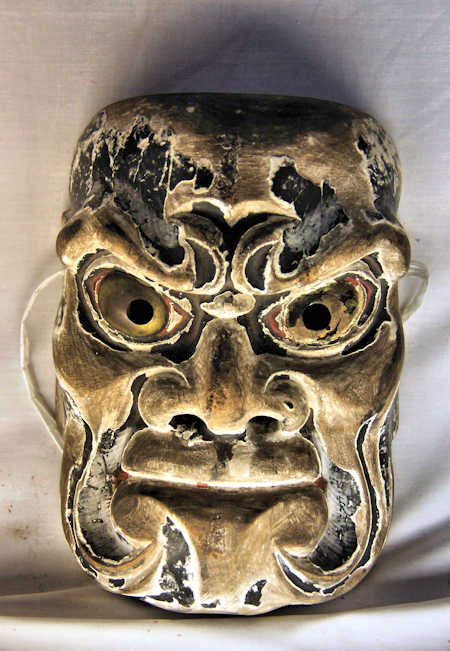Showing posts with label masks. Show all posts
Showing posts with label masks. Show all posts
Friday, February 2, 2024
Kakaji Betsugu Hachiman Shrine
Monday, November 22, 2021
Yakumo Honjin Museum
There was the obligatory suit of samurai armour, but no swords. There was a palanqui, pictured above, and a series of lanterns.
Monday, December 14, 2020
Masks of Taketomi Island
Taketomi
Taketomi Island is a small island just off Ishigaki Island in the chain of islands now called Okinawa. It is most well known for the water buffalo-drawn carts (click here) that take tourist around the small village which is a preservation district.
Being a mask-maker myself, though admittedly somewhat lapsed, I was intrigued by the masks in the local folklore museum that was housed in the villages small buddhist temple.Friday, September 11, 2020
Tashibu Motomiya Hachimansha
Labels:
Hachiman,
kyushu fudo,
masks,
Shrine,
torii
Saturday, April 11, 2020
Kanmai Masks at Hirakiki Shrine
One of the things I am always on the lookout for in my wanderings in the back country of Japan, are masks. Being a mask-maker myself, though admittedly somewhat lapsed, I look for the unusual and diverse that can inform my own masks.....
At Hirakiki Shrine in the far south of Kagoshima Prefecture I hit paydirt. They had 24 old wooden masks on display. In a back room I also saw a collection of newer masks that the priest let me in to view, but today here are some of the old ones.
I wish I had talked with the priest more, but what I have been able to find out is that the masks were worn for Kanmai, which translates as "god dance"... they don't use the word kagura. There used to be a lot more dances performed, but some still are, in October.
Traditions in this part of Japan were usually somewhat different from mainstream Japan.
I'm sorry I didn't ask about the names of the masks....
Need to get back there and do some research..... one of these days.....
Tuesday, January 28, 2020
Masks of Ishigaki Island
Masks of Ishigaki
Ishigaki is a small island that is part of what is now Okinawa, though it is much closer to Taiwan than to the main island of Okinawa.
The Ishigaki Shiritsu Yaeyama Museum is a local history museum that had some masks among the displays, and masks are objects I seek out when traveling around Japan.
I know little about Okinawan masks, but it looks like these three are some form of ogre.
I believe the second photo show Angama masks which are worn during Obon. The bottom photo is a Shishi.
Sunday, September 22, 2019
Tengu Masks in the Kirishima Mask Museum
Kirishima Mask Museum
The mask museum in Kirishima was called "Tengu-kan", and obviously there were a lot of masks of tengu on display. Most of which were the red-faced long nose variety.
Probably the earlier version of Tengu was more birdlike in appearance, like the one in the top center of the photo below. The long nosed version is probably derived from Sarutahiko, the earthy kami who helped lead Ninigi and his entourage from the High Plain of Heaven. he later married Uzume and a mask of Sarutahiko and Uzume are often found together at shrines, often linked to fertility.
Tengu are often connected to Yamabushi, the mysterious mountain monks who practised austerities and magic in the remote sacred mountains. A distinguishing feature is the tokin, the small black headgear worn on the top of the forehead. It is said this was to protect the head while walking through the forest. It was also used as a drinking vessel.
The museum is located near the entrance to Kirishima Jingu Shrine up in the mountains of northern Kagoshima and if you are visiting the area and like masks then is a must see.
Subscribe to:
Posts (Atom)






























































